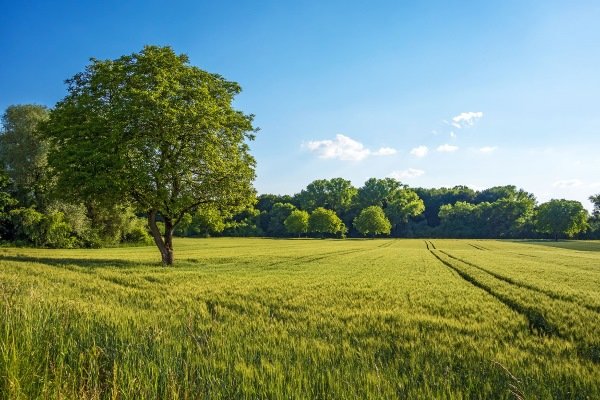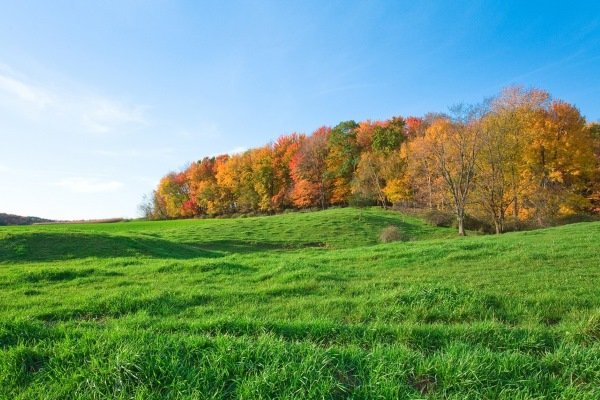Definition of land resources and their application
Land resources are among the main exhaustible resources, without which human existence is impossible. Land resources have their own characteristics and composition, and the activities of any state, first of all, are aimed at their effective management and protection from the negative impact of natural factors and the consequences of human activities.
Basic concepts
Land resources are those types of resources that are not created artificially and do not have a fixed price. This part of the land fund is intended for use in the national economy. These include the surface of the earth, which is suitable for human habitation, construction and farming. Features such as relief or soil composition are involved in the characteristics of resources.
The land fund of any country is the ratio of fields used for pastures, agriculture, industry or planted with forests.
Speaking about the planet as a whole, it can be noted that about a third of the land fund is agricultural land used for crops and growth. It should be noted that about ¾ of the land has a reduced level of productivity, which is associated with climatic conditions. Agricultural land includes arable land, perennial plantations, meadows and pastures.
The land fund also includes deserts and highlands, which are inconvenient lands. Other types of such resources include the following lands:
- industrial;
- for housing stock of cities and towns;
- energy;
- communication and broadcasting zones;
- special purpose areas.
Speaking about the percentage of the structure of land resources, the following ratios can be distinguished:
- Cultivated land - 11%
- Meadows and pastures - 23-25%
- Forests and forest plantations - 31%
- Cities and other settlements - 2%
- Lands with a low level of productivity - 31%
It is important to note that the World Land Fund is determined depending on the area of land per person. Thus, about 1 hectare of land is allocated per inhabitant of Asia and Europe, while 37 hectares per inhabitant of Australia. The quality of land is determined by population density. The virgin lands are recognized as the most fertile, and the lands where the most people live are considered the most exhausted.
How are resources distributed?
Every day humanity consumes food equal to 37 million tons of wheat. At the same time, it should be taken into account that the annual increase is about 70 million people, so agricultural production should increase by 24 million tons annually. To make this possible, it is necessary to guarantee the efficient distribution of land resources according to the following criteria:
- Soils that have the worst fertility or none at all are used to accommodate industrial enterprises.
- Soils, which are distinguished by high quality of fertility, are allocated for the placement of agricultural enterprises.
- For energy, it is necessary to allocate separate lands located far from fertile land resources, since as a result of the production of electricity, the environment is polluted in a certain way.

It is worth noting that many cities are located on fertile lands, since earlier urban areas consisted of private houses with household plots, and not high-rise buildings.
How is land valued?
When assessing the soil resources of a particular area, the following main indicators are used:
- Land size, which is measured in ha or sq. km.
- Productivity, which is defined as the volume of useful products received per unit of land per year. It is measured in t / ha, m3 / ha.
- land quality, that is, its suitability for a specific use - agriculture, construction, mining.
- Provision of the state with land. That is, the average area per person.
Resource protection
Land resources tend to decrease. This is due to the fact that productive lands are often allocated not only for agriculture, but also for construction or mining, and are flooded during the construction of reservoirs.
Significantly affects land resources and urbanization. Improper use of the soil leads to its degradation.
The main reasons for the reduction of the productive fund of land resources include:
- soil erosion;
- the formation of ruts;
- gullies;
- ravines;
- salinization and waterlogging of soils;
- desertification;
- depletion of the fertile soil layer.
To conserve land resources, each state takes a number of measures aimed at protecting soils. This includes:
- Land monitoring.
- Compilation of the state cadastre and its observance.
- Protection of soils from erosion and salts.
- Protection against waterlogging and flooding.
- Land reclamation.
- Establishment of special regimes of use for a number of sites that are classified as nature conservation or historical and cultural.

Land administration
It is one of the main directions in the activities of the state and is aimed directly at the protection of the land fund and ensuring its rational use. The main types of management and their functions are fixed with the help of regulations.
The main types of resource management include:
- Creation and maintenance of the state cadastre.
- Provision of land to both individuals and legal entities for the implementation of certain activities.
- Protection of the right of citizens to use land, as well as the right to property.
- Planning the use of land resources at the disposal of the state.
- Permanent land monitoring.
- Control over observance of the land legislation.
Land resources of Russia
The land fund of the Russian Federation consists of 1,700 million hectares, the distribution of which is as follows:
- 64 million hectares - arable land and pastures;
- 20-23 million - cities and towns;
- The rest is forest zones and water management.
The main part of the land fund of the Russian Federation is located in the taiga and tundra, that is, not in the most favorable conditions. Arable land is not listed under forestry lands due to the policy of forest protection.
Despite the fact that soil resources are large, they are of low quality for sowing. The main reason for the unproductiveness of these resources is their incorrect use, and agriculture develops due to the fact that the area under cultivation increases. In cities, the land is used as productively as possible, building up high-rise buildings and enterprises.
Video presentation
You can learn more about land resources, their main characteristics and the activities of the state aimed at protecting and protecting land from the video:
Land resources are the most significant exhaustible resources. One of the main tasks not only of the state, but also of citizens is the protection of land and soil from pollution, depletion and erosion, since it is the presence of fertile, productive land that guarantees a high standard of living for people and their health.


